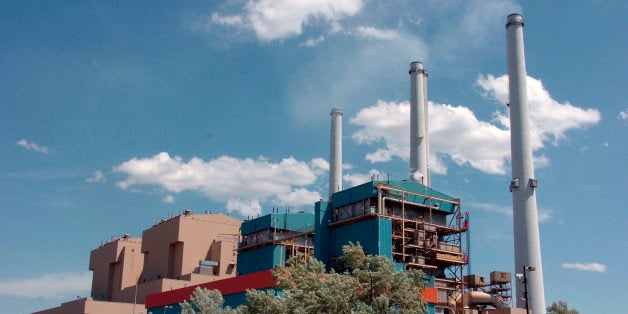
WASHINGTON -- Emissions from power plants, refineries and other industrial facilities in the United States increased in 2013, up 20 million metric tons -- or 0.6 percent -- over the previous year, according to a new report from the Environmental Protection Agency released Tuesday.
The EPA said the increase in 2013 was "driven largely by an increase in coal use for power generation." Thirteen million metric tons of increase was from the power sector alone. The agency said 1,550 power plants released a total of more than 2 billion metric tons of greenhouse gas emissions last year. Overall, however, emissions from power plants are down 9.8 percent since 2010, the agency said.
The agency has collected data on emissions from major industrial facilities for the past four years as part of the Greenhouse Gas Reporting Program. A separate tally, from the Global Carbon Project, reported last week that U.S. emissions were up 2.9 percent in 2013.
David Doniger, director of the climate and clean air program at the Natural Resources Defense Council, said the report shows the importance of following through on the draft rules on greenhouse gas emissions from existing power plants that the EPA issued in June.
"We need to get those emissions down, to keep them going down, and the standards are critical to do that," said Doniger. "The reductions won't happen by themselves."
"It is a reminder of just how crucial are EPA's upcoming standards for existing power plants," said Frank O'Donnell, president of Clean Air Watch. "Coal isn’t going to vanish -- or perhaps even diminish further in use -- without aggressive standards to limit carbon emissions."
Emissions from refineries increased 1.6 percent in 2013, while emissions from other large industrial and waste sector facilities increased 1 percent.
One brighter spot in the report is the oil and gas sector, which includes production, transmission and distribution, where emissions were down 1 percent in 2013. That sector is the second-largest source included in the registry. The report notes that the biggest reduction in that sector was in methane emissions at hydraulically fractured natural gas wells, which declined 73 percent. That is largely attributed to a new rule the EPA issued in 2012 that required gas producers to reduce emissions at well sites.
Doniger said that while the reduction in that part of the sector is positive, there haven't been the same reductions in other parts of the oil and gas system. "Basically not much has been done anywhere else in the system," he said.
Environmental groups and some Democratic senators have been pushing the EPA to issue further rules on methane emissions in the oil and gas sector. EPA Administrator Gina McCarthy said last week that the EPA plans to release a methane plan later this fall, but has not said whether the agency will recommend voluntary measures or new regulations.

